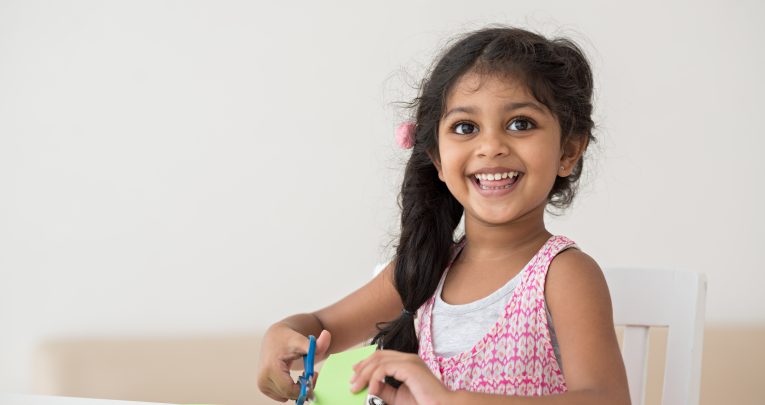What To Do When Pupil Behaviour Becomes Extreme

Tracey Lawrence looks what methods and approaches teachers can draw on when dealing with cases of extreme behaviour

By thinking of how you deal with behaviour and your strategies, you’ll be able to support more effectively. It’s important to keep calm and level-headed during these times. Build your support networks, both in and out of school, so that you can ‘switch off’, as well as think strategically.
Extreme behaviours can bring about a whole host of different situations that you may have never seen before, such as behaviours that you’ve previously not been exposed to and physical restraint.
These can cloud your judgements, as they aren’t easy to deal with. However, in your job as a class teacher, you have that duty of care to support all of your children, as well as provide equal access to education for all.
Try to think of behaviour in the same way as you think of academia. If there’s a gap in knowledge, you support children to achieve. If there’s a gap in behaviour, you support children to progress.
‘Non-violent communication’ is a communication process that was developed by Marshall Rosenburg in the 1960s. It looked at three different aspects of communication: self-empathy, empathy and honest self-expression.
Self-empathy is a deep, compassionate awareness of your own inner experience; empathy is understanding and sharing an emotion with others; and honest self- expression is expressing yourself genuinely in a way that will inspire compassion within others.
It’s based on the theory that all humans have the capacity for compassion and only resort to difficult behaviour when they cannot recognise more effective strategies for meeting their needs.
This links into the thought that behaviour is communication, and that we need to unlock the strategies to help children to communicate more effectively. There are ways of supporting yourself, and a range of methods that you may want to choose.
Alternative provision
There may be schools around your local area that help to provide support for your children, be it effective interventions, advice for support staff or support in deciphering targets. Don’t view alternative provision as a separate entity. Collaboration is powerful, so use their advice as proactively as you can. Have a conversation, seek their advice and listen to their experiences.
Some PRUs and special schools have free outreach services and can come and support you in your setting. Call your local specialist provision to see how to access this support. For some it is a telephone referral, and for others there may be a referral form.
Other provisions offer advice via a panel, where a group of colleagues come together to share experiences and previously used strategies, which can help with clarity and progress with your child. Again, call your local provisions to discuss ways that you can refer.
Restorative approaches
Restorative practice centres around creating a sense of belonging for our children – increasing a child’s ability to develop social relationships with others, as well as restore these relationships when they go wrong.
With children displaying these more extreme behaviours, our intervention is required even more. We need to be aware of relationships that are forming and support children during this time.
As a teacher, you need to know the benefits of an approach and the ways to implement it. As there are reams of evidence and information about this available, here’s just a brief introduction.
The main benefits you will see if you implement this approach are based around relationships.
You know that your relationships can support or have a negative impact on a situation, so in improving this area you can also improve the harmony within your classroom.
You will head towards a relationship, rather than implementing sanctions as a way of managing behaviours.
You’ll work towards a community where children take responsibility and are more honest about their actions.
Most of all, you’ll have built an environment where there are better relationships amongst staff and other children.
When there’s been a behaviour incident within your classroom and you embark on restorative practice, you may need to focus on some of the following through your facilitation:
- Effective communication within your class
- Friendships and other relationships
- Respect, empathy, repairing damage and even understanding the impact of your children’s behaviour on others in the class
Although these elements are your focus for restoration, you may find that there’s a sense of restoration within the individual, whether it be secure boundaries for the child, self-confidence or self-respect.
Practical steps to take
You are the facilitator, so you need to cultivate responses to the following key questions. What has happened? What has been the impact on those involved in the incident? What needs to happen to make things right? And how can this be avoided next time?
As a teacher, I’m sure these questions are familiar to you, but you do need to ensure that you’re building a culture of restorative practice consistently. There will be times where you will not be facilitator, but you do need to ensure that other members of staff who will take this on have the following qualities:
- A good rapport with pupils
- A calming influence over what could be a heated exchange
- Are able to sit back, not jump in/ interrupt and be an active listener
- Trustworthy
- Are able to encourage your children to express themselves honestly
- Are able to encourage your children to express themselves honestly
- Are able to appreciate the impact of a child’s thoughts, feelings, beliefs and unmet needs on their behavioural choices.
Long-term actions
If you want to implement these steps in your classroom, here are a couple of ideas for doing so consistently…
Lanyard card Have the key questions on a card. If you have a school ID lanyard, these could fit on the back. If not, it should be something that can easily be carried around.
This is another way of supporting your classroom staff. You or others may be coming into this restoration from somewhere else, and a little refresher on the key questions may be helpful.
Model Your colleagues need to be clear on the process and knowledgeable about the principles. If you’ve had whole-school training, then continue this by modelling these restorative conversations.
It’s good practice to coach using this model so you’ve all had experience in observing others delivering the conversation. It keeps things fresh and allows opportunities for questions and discussions around difficult conversations.
Tracey Lawrence is an SEMH specialist leader for education and asssistant headteacher at a mainstream school in Leicestershire.










